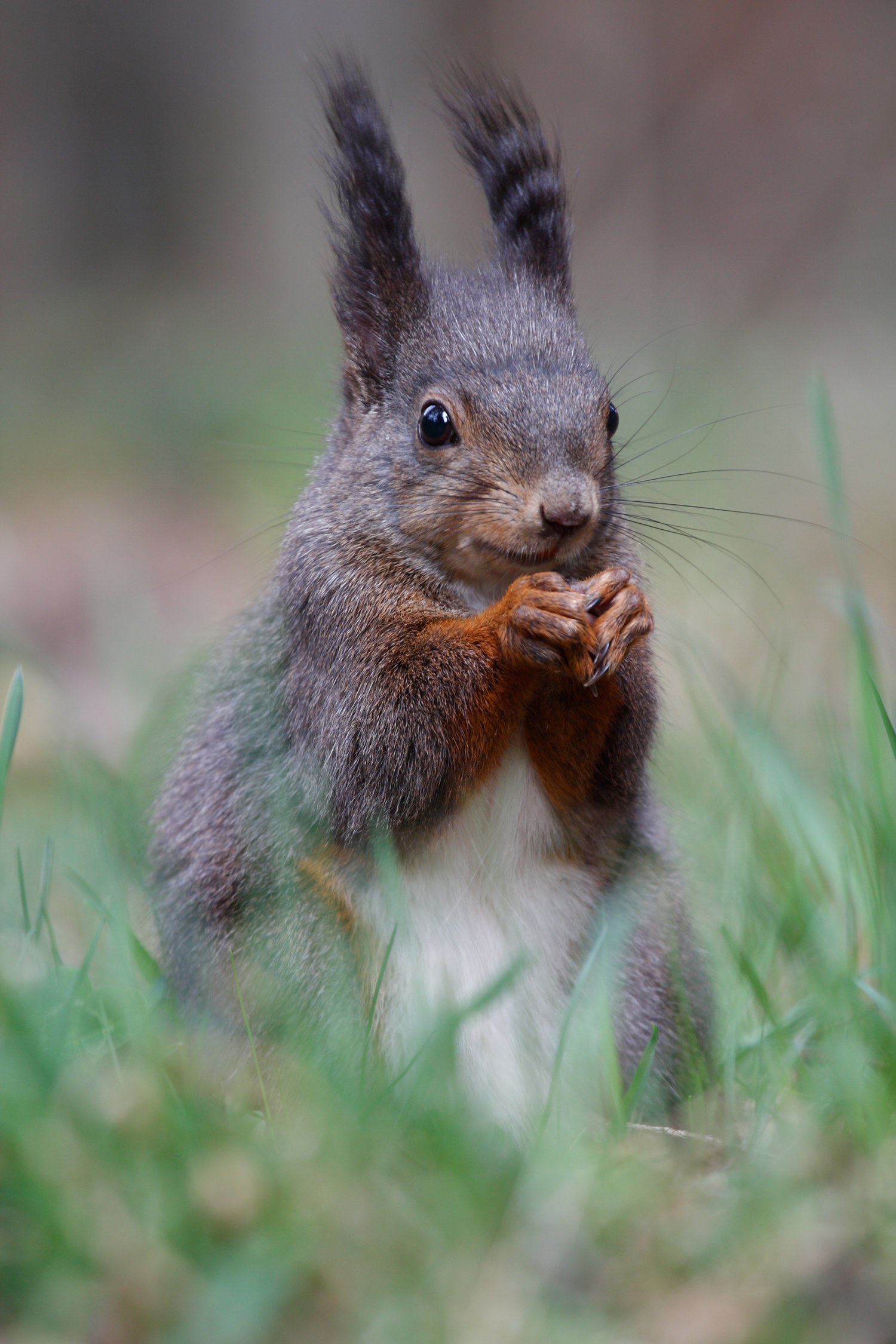(Sciurus vulgaris)
Distribution/habitat
The squirrel is found in Europe and all throughout North Asia. It can be found from the plains up to the tree line, where it populates parks, gardens and forests with high, old tree populations.
Description/characteristics
The squirrel’s physique is perfectly adapted to life in the trees. The most notable characteristic is the bushy tail, which makes up almost half of the entire body length. When climbing it serves as a balancing aid and when jumping as a rudder. Thanks to the tail and the strong hind legs, the squirrel can jump up to 5 m distance. The coat is rust-red in summer, darker in winter, only on the underside is it always white. Also eye-catching are the ear tufts, which in winter are clearly pronounced.
Special features
The diurnal squirrel retreats to its nest (drey) high up in the trees at night. It takes winter rest (no hibernation!) during which it awakens several times in order to search for its previously hidden stocks of e.g. nuts, acorns, beechnut, which it cracks with its incisors so typically strong for rodents. But as the squirrel is an omnivore, insects, birds’ eggs and young birds are also occasionally on the menu.
Endangerment/protection
Currently, the squirrel is rated as not endangered by the IUCN (International Union for Conservation of Nature), even if as a result of regional losses of habitat and even hunting for the fur trade, numbers are decreasing.
Literature
DIERSCHKE, V., GMINDER, A., HECKER, F., HENSEL, W. & SPOHN, M. (2016): Der Kosmos Tier- & Pflanzenführer. – Franckh-Kosmos Verlags-GmbH & Co. KG, Stuttgart: 541 pp.



 Natur im Fokus "Eichhörnchen"
Natur im Fokus "Eichhörnchen"








